All about freestanding dishwashers

Knowing everything about freestanding dishwashers is very useful for the general circle of consumers. It is necessary to clearly distinguish between non-built-in compact narrow dishwashers and other stationary floor-standing models. And you will also have to answer the question of how to choose them.
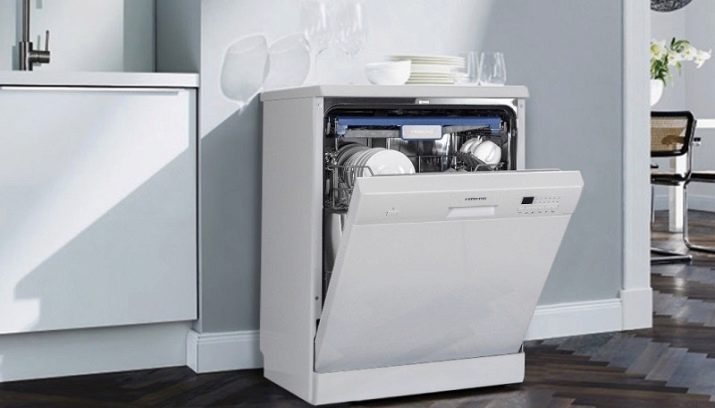
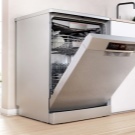
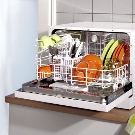
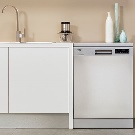
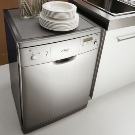
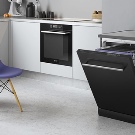
What it is?
It should be said right away that freestanding dishwashers in some cases are called more simplistically - solo. Their installation can be carried out in almost any convenient place. It should only be noted that in most situations, the most practical installation is along a wall, close to a water source and a sewer main. Putting the dishwasher in the middle of the room is hardly justified. Often there are even statements that there are no fundamental differences from the built-in washing machine. However, this thesis is clearly wrong. Built-in appliances, including floor-standing ones, clearly wins in terms of thoughtfulness of thermal insulation and ventilation communications.
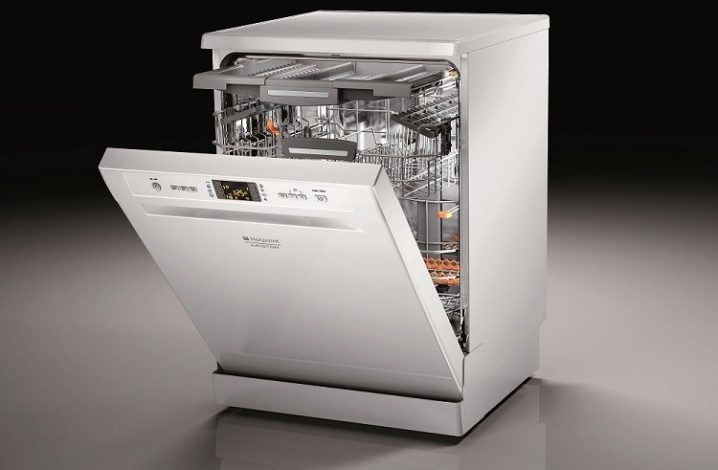
However, it is hardly necessary for stand-alone devices. They are often placed not close to other pieces of furniture, but with a certain air gap in relation to them. Refusal from such technologies allows significant savings. Freestanding units are usually compact. They can be easily installed even in small kitchens. From an aesthetic point of view, there are good models in both categories. But built-in ones are still ahead visually.
The advantage of stand-alone models is increased convenience and practicality; however, they will not wash a large number of dishes.


What are they?
Compact
Such dishwashers are colloquially called small, but professionals and catalog compilers write more clearly about narrow washing equipment. The difference only concerns the width. In the case of narrow devices, it is 45 cm. The height (85 cm) and depth (60 cm) are strictly maintained. Exceptions are quite rare; compact versions are suitable for small kitchens that are used by a relatively small number of people.
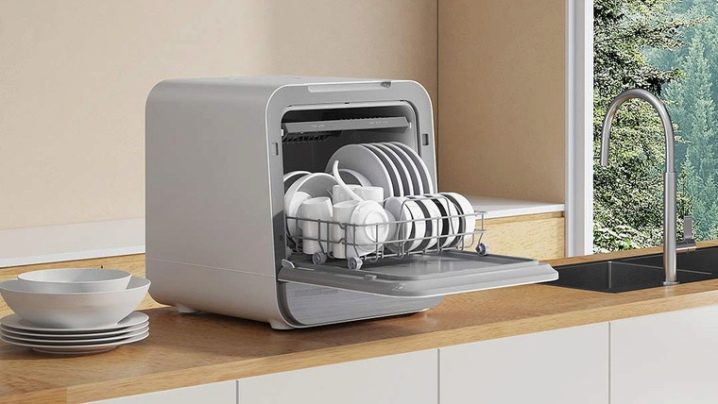
The small-sized model will wash the dishes relatively little. True, for most consumers, such a device will completely cover all personal needs. Small washing machines usually save water and electricity. Considering the constantly growing utility rates, this is not a superfluous property at all.
True, those who like to cook a lot and in large containers will not like such an apparatus.
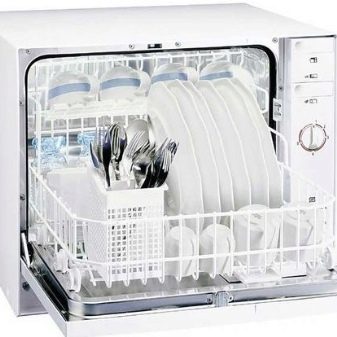
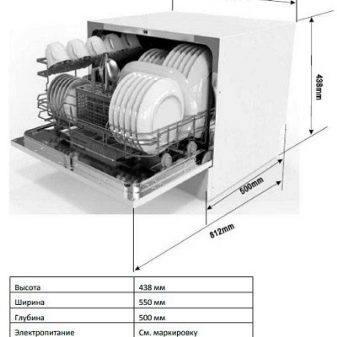
Fullsize
Otherwise, they are usually called large dishwashers. Typical width is 60 cm. This technique is usually designed to wash 12-16 standard sets of dishes in 1 run. It will help you tidy up baking trays, 5-liter pots and other bulky items. In addition to a large chamber for washing, another advantage is provided - a wide selection of programs. Besides the main modes, there are usually many other sub options.
However, it will be very difficult to put a non-built-in dishwasher with such dimensions under the countertop. In a kitchen with small overall dimensions, these dimensions are all the more not well perceived. And for a small family or one person, the required amount of dishes for a full load - as for a stationary model - will have to accumulate for several days.

This devalues the very idea of simplifying everyday life. And from a hygienic point of view, there will be a lot of problems. For the most confined space, a shallow (or rather, 50 cm deep) dishwasher is intended. Taking into account the necessary reserve for communications and the furniture facade, in fact, it turns out already 65-70 cm. And with a depth of 55 cm, it will already turn out to be 70-75 cm, respectively. The vertical edge of the dishwasher is also important. With a height of 80 cm (and close to it 82 cm), it turns out to provide the maximum load; the size of 45-55 cm allows you to guarantee embedding in relatively small niches.


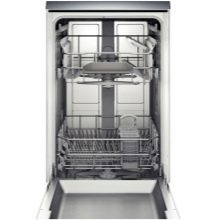
Regardless of overall dimensions, dishwashers are also divided into technological classes. Most often, they use the division into classes A, B, C. Models of category A are the most economical and at the same time very productive. It should be borne in mind that the class for water consumption and for electricity costs may differ (although usually these indicators are correlated). Expensive washers are distinguished by the ability to adjust all compartments for inclination and height.
That is why they are the most convenient. But it would be very strange to talk about the types of dishwashers without paying attention to the programs in them. Typical budget-level models have a maximum of 5-6 modes. In one of them, work is accelerated, while in the other, an especially intensive washing is provided.
The duration of the procedure will be at least 60 minutes, but it will ensure effective removal of even stubborn blockages.
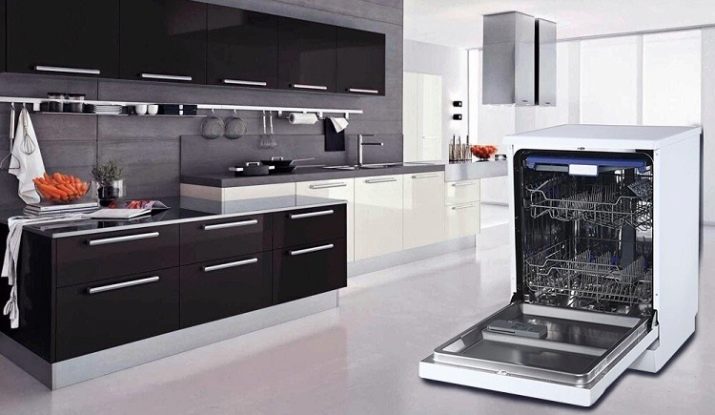



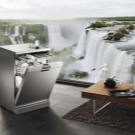
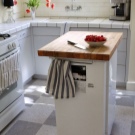
Review of the best models
Dexp M6C7PD
It makes sense to start rating quality budget dishwashers from model Dexp M6C7PD... It is designed to wash 6 sets of typical dishes. The designers have provided 7 washing modes. Among them there is even a special program for working with crystal and thin glass products, as well as a soaking option. In a typical cycle, no more than 5-6 liters of water is consumed.
By default, this model is painted white. Other colors are not provided for it. The dishes are drying in condensation mode. The screen is not provided, but the timer start delay is quite affordable. The highest washing temperature is 70 degrees; the smallest is 40 degrees.
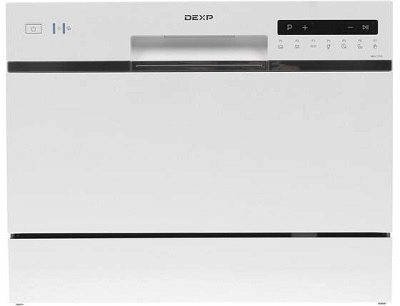
DeLonghi DDWS09F Citrino
Reliable enough and inexpensive to hit the top is DeLonghi DDWS09F Citrino model... Its developers in the description focused on reducing water and electricity costs. Despite being economical, the ability to deal with very serious blockages is also highlighted. The option to start in delayed mode has been worked out, and there is also a system for informing about the lack of detergent. Other features:
- familiar white color;
- washing 12 sets of dishes at a time;
- consumption of 9 liters of water for 1 cycle of the washing operation;
- a module for assessing water contamination is provided;
- 6 work programs, including express wash and delicate work;
- there is no rinsing, but the half load option has been worked out;
- preliminary soaking was not provided;
- sound volume during operation - 49 dB;
- net weight 39 kg;
- special program for working with pots.
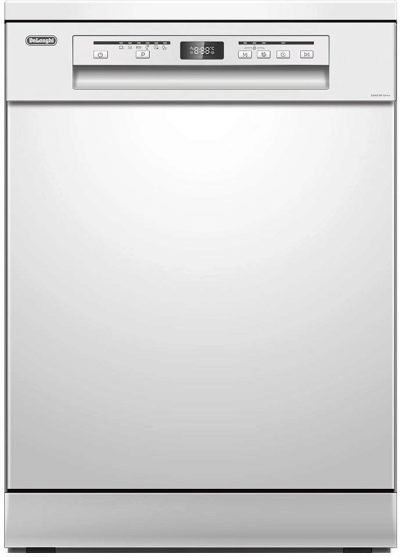
Hansa ZWM 446 IEH
When choosing a silver freestanding dishwasher, you should pay attention to Hansa ZWM 446 IEH... Its width is 45 cm. With a consumption of 8.5 liters of water, it can wash up to 10 typical sets of dishes per session. The designers have come up with a good set of electronic controls. Within the cycle, 0.75 kWh is consumed.
The highest electrical consumption per hour is declared at 1.93 kW. Drying will run in condensation mode. It is not possible to delay the start or check the purity of the water. Washing water temperature varies from 40 to 65 degrees. The model is capable of giving sound notifications.
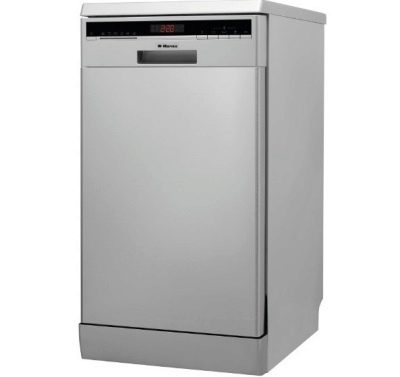
Electrolux ESF9552LOX
The gray dishwasher is often praised for its versatility. Electrolux ESF9552LOX. Its range of functions allows for optimal cleaning of dishes. The device is classified as economy level A. Within a cycle, up to 13 sets of dishes are cleaned. The work is very quiet, the maximum sound is 47 dB (which is less than the permissible norm in an office building).The inverter motor also allows you to cope with a large load. The stainless working chamber is completely hygienic. There is a delicate cleaning function. It is allowed to use 3 in 1 products. The engineers also provided for the equipment with a water purity sensor.
Additionally, it is worth emphasizing:
- reliable protection against water leakage;
- entry into the set of baskets for cutlery;
- water consumption 6.5 liters for 1 session;
- automatic door opening option;
- availability of an accelerated half-hour program;
- traditional type of drying;
- delayed start up to 24 hours.

Electrolux ESF2400OH
The stylish red machine Electrolux ESF2400OH can offer six programs. It is compact enough to fit even in a very small kitchen. Nevertheless, it copes well with washing 6 sets of dishes. For a cycle of work, only 0.64 kW of current and 6.5 liters of water are needed.
When washing with water heated to 70 degrees, the overwhelming majority of microbes and allergens are eliminated; the sound volume does not exceed 50 dB.
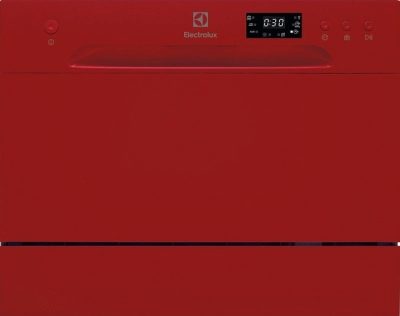
Weissgauff TDW 4017 D
Lovers of black home appliances should pay attention to the Weissgauff TDW 4017 D. This compact device can easily fit even on the kitchen countertop. The official description emphasizes the ergonomics of the baskets and the intuitive operation. The functional chamber is made of high-quality stainless steel, and automatic cleaning is provided. Other nuances:
- condensation drying;
- biomode;
- electronic control;
- protection against water leaks;
- net weight less than 20 kg.
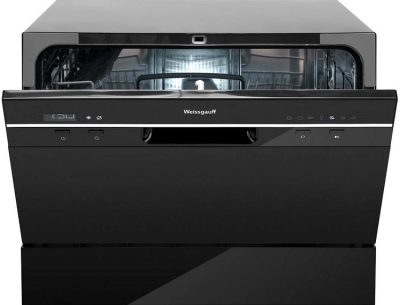
Criterias of choice
From the above, one important conclusion can already be drawn - it is advisable, first of all, to choose a dishwasher according to such parameters as capacity and total dimensions. These indicators are obviously related. But you cannot limit yourself to them. You should definitely pay attention to water consumption and electricity costs. A somewhat unexpected tip is to see if the instructions are easy to find on the Internet, or if they are included in the delivery set.
Without such a document, normal installation will be very difficult. There is a high probability of a serious error that will cause problems. It is advisable to give preference to the products of well-known companies, models that have been on the market for a long time (and not those that have recently been introduced to the market). It is very useful to have such a function as measuring water quality and indicating detergent residues - without them, washing is not very effective and can even present real surprises.
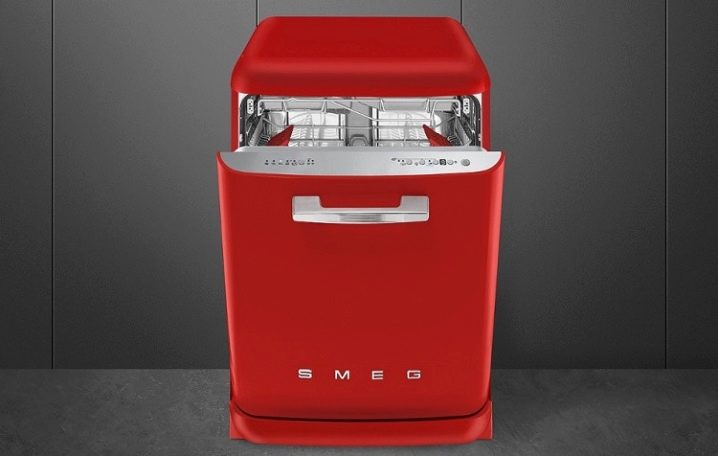
It is also worth finding out if the machine can use category 3 in 1 detergents. In general, more attention should be paid to the topic of its compatibility with different detergents. An unconditional advantage for any model of dishwasher equipment will be the presence of protection against leaks. It is only necessary to clarify whether it applies to the body, or also to the hoses, which is very important in terms of avoiding unexpected surprises. Returning to the dimensions, it is worth adding that it is better to order such equipment at the same time as the headset, carefully agreeing on its dimensions.
For a large family, it is advisable to choose devices with an especially large size. The presence of external panels provides convenient monitoring of the work and guarantees effective intervention in management. For a summer residence, you can choose a PMM with the same characteristics as for a city apartment. The only exception is the situation when the central water supply is extremely unstable or absent altogether. In this case, it makes sense to choose a device that works offline.

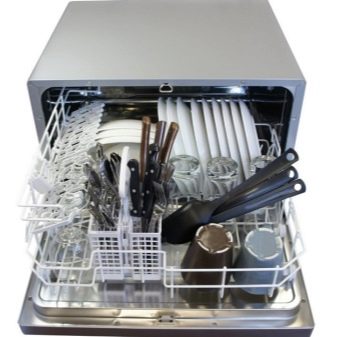
Biological programs are relevant for those who wash dishes at low temperatures. This saves money on hot water or on-site heating. Sometimes the half load function turns out to be convenient - especially if it is not possible to clearly predict the amount of dirty dishes. The snooze timer comes in handy when using a multi-tariff electricity meter or a non-rhythmic lifestyle.Condensation drying reduces the current consumption, but after it the dishes may remain covered with streaks; the less economical heat exchange option is devoid of this drawback, so priorities must be taken into account.
The most expensive models from Siemens, Miele, Bosch and Kuppersbusch, as well as from other brands of a comparable level, are indeed effective. But you need to understand that many of them can cost at the level of a solid plasma TV or a six-month average salary in the country. Only the people themselves can decide whether such costs are justified for them or not. But the number of service centers and the availability of spare parts in a specific location are important for all consumers of both cheap and expensive equipment.
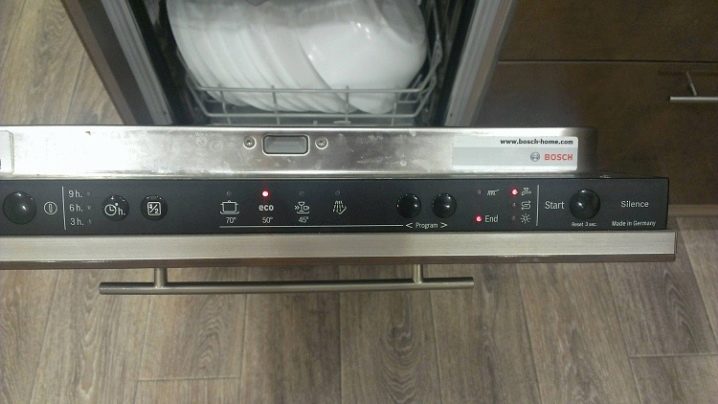
There are several more aspects:
- the presence of special compartments for knives and forks;
- decorative design;
- cleaning modes;
- the presence of displays and sound alerts;
- outdoor or tabletop installation;
- possibility or inability to remove baskets;
- working chamber material;
- convenience and thoughtfulness of controls;
- reviews about the manufacturer and specific model.
Advanced models can be equipped with glass holders. But you need to understand that the size of the leg is critically important in this case. A thin support falls out of a wide holder, and, on the contrary, a thick leg will not fit into a narrow structure. The classic layout allows you to put large dishes in the machine.
A modern design option will help wash more small items in one go.
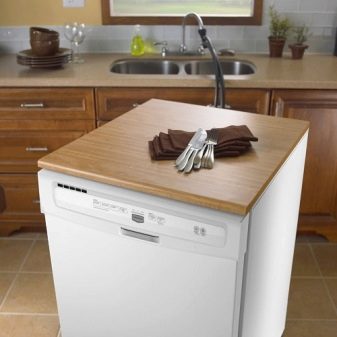
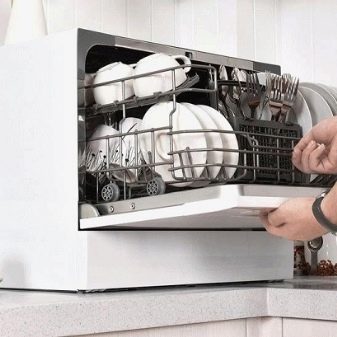
How to install correctly?
The most important thing for a dishwasher is choosing a place to install it. In such a place, the comfortable use of technology should be ensured, and, moreover, all problems and inconveniences for people and pets, for furniture and other devices should be eliminated. It is important to remember that the PMM is still connected to the outlet and to the water supply, and it is worth putting it so that the use of these two types of communications goes with minimal difficulties. The shorter the lines, both electrical wires and hoses, the better and more reliable it will be. If possible, place the device as close to the wall as possible.
To make it easier to connect the machine to the water supply, it is necessary to foresee in advance the wiring with 3/4 inch metal-plastic pipes. A tee and a shut-off valve must be suitably sized. It is useful to put a high-purity filter, which extends the life of the dishwasher. Sealing should be done with FUM tape, which is much more practical than plumbing tow.

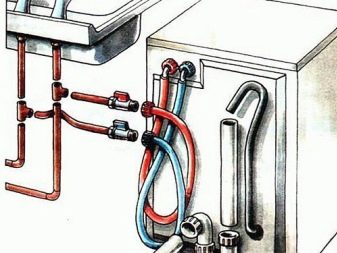
The sockets should be grounded in advance. Tabletop dishwashers allow you to abandon the complex drain complex and simply fix the hose in the sink drain. A siphon is also not required in this case. You only need to connect the device to a cold water supply. It is strictly forbidden to use hot water supply.
The electrical outlet must be rated for at least 16A. Naturally, another requirement is to use only copper, not aluminum wire. It is better to choose its section with a margin. The connection must go to a separate outlet. One where a washing machine or electric stove is already connected will not work; the easiest way to hide the dishwasher is behind the furniture facade.
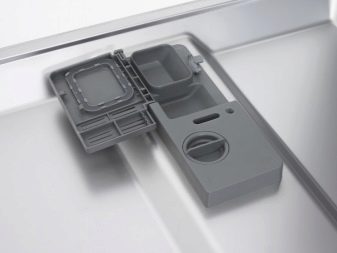
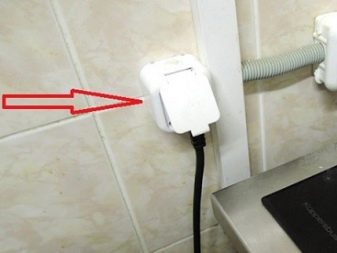
Examples in the interior
Using freestanding dishwashers is not necessary in the center of the room. It is much more logical to put them in the kitchen next to the served area. In the proposed version, an ordinary white dishwasher is harmoniously integrated into the gap separating the refrigerator and microwave oven. You can also insert it under the worktop between the refrigerator and the washing area.
This solution is well suited for small corner kitchens.


It is worth looking at other options, such as:
- a light gray model surrounded by brightly colored wood-look facades;
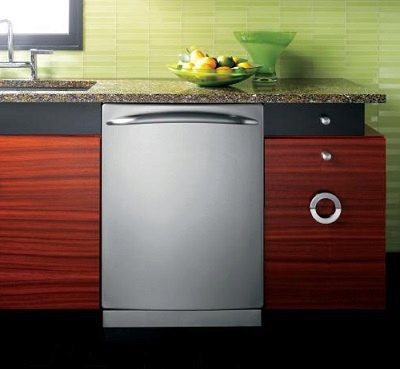
- placing the dishwasher near the gas stove, next to the light wood facade of the lower tier cabinets under the stainless worktop, against the background of a discreet tiled floor in two different tones, approximately in the middle between the windows closed with blinds;

- installation of a dishwasher next to the washing machine, which makes it possible to simplify the wiring of communications;

- installation between the washing place and the refrigerator (the colors of the refrigerator and the sink harmoniously match).














The comment was sent successfully.